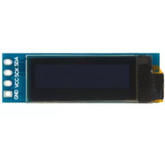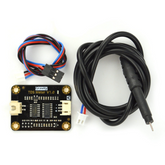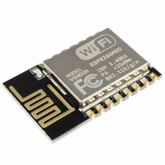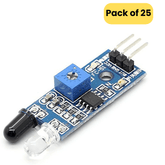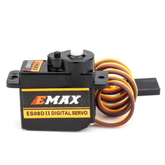Latest IoT Project Ideas for Students
Summary
The Internet of Things has transformed how we interact with technology, bridging the physical and digital worlds through smart, interconnected devices.
For students eager to explore this revolutionary field, building IoT Projects offers hands-on experience with sensors, microcontrollers, cloud platforms, and wireless communication.
These projects not only strengthen technical skills but also open doors to innovation in automation, healthcare, agriculture, and beyond.
This guide presents 15 cutting-edge IoT project options for students, complete with detailed tutorials to help you get started.

What Is IoT and How Does It Work?
The Internet of Things refers to a network of physical devices embedded with sensors, software, and connectivity features that enable them to collect, exchange, and act on data without human intervention.
These smart devices communicate through wireless protocols like Wi-Fi, Bluetooth, Zigbee, or cellular networks, creating an ecosystem of interconnected systems that improve efficiency, convenience, and decision-making.
An IoT system consists of four essential components: sensors that gather environmental data, microcontrollers or processors that analyze this information, connectivity modules that transmit data to cloud servers or local networks, and user interfaces like mobile apps or web dashboards that allow monitoring and control.
When a temperature sensor detects a change in room conditions, for instance, it sends this data to a microcontroller, which processes the information and triggers an action such as turning on a fan or sending an alert to your smartphone.
IoT automation projects leverage machine learning algorithms and cloud computing to create intelligent systems that learn from patterns and optimize their operations over time.
From Arduino IoT Projects using simple sensors to complex Raspberry Pi IoT Project incorporating computer vision and artificial intelligence, students can explore various platforms and technologies.
The flexibility of IoT based projects makes them ideal for solving real-world problems across industries, from smart homes and precision agriculture to healthcare monitoring and industrial automation.
Understanding practical IoT learning begins with selecting the right hardware platform. Popular choices include Arduino boards for beginners, ESP32 or ESP8266 modules for Wi-Fi-enabled projects, and Raspberry Pi for more computationally intensive applications.
These platforms support various programming languages, with Python, C++, and JavaScript being the most commonly used for IoT Projects for beginners.
15 Latest IoT Project Ideas for Students

1. Automatic Fish Feeder
An automatic fish feeder represents an excellent entry point into IoT Projects for students by combining hardware control with mobile connectivity.
This smart device eliminates the worry of feeding your aquatic pets during vacations or busy schedules, offering both manual and scheduled feeding options through a smartphone interface.
The project teaches fundamental concepts of servo motor control, wireless communication, and mobile app integration.
Key Features:
- Remote feeding capability via smartphone application from anywhere in the world
- Programmable feeding schedules with customizable portion sizes and timing intervals
- Real-time notifications confirming successful feeding operations
- Manual override function for instant feeding on demand
- Low-power design suitable for battery operation with sleep modes
2. Temperature-Based Fan Speed Control
This intelligent climate control system demonstrates the power of IoT automation projects by automatically regulating fan speed according to ambient temperature readings.
Unlike traditional fan controllers with fixed settings, this IoT project using ESP32 or ESP8266 continuously monitors room temperature and adjusts cooling intensity dynamically.
Students gain experience with analog sensor interfacing, PWM motor control, and creating responsive web dashboards.
Key Features:
- Automatic fan speed adjustment based on real-time temperature measurements
- Customizable temperature thresholds for different speed levels
- Web-based dashboard displaying current temperature and fan status
- Historical data logging for temperature trend analysis
- Energy-efficient operation reducing unnecessary power consumption
3. Smart Garage Door Opener
Security meets convenience in this comprehensive IoT mini projects for engineering students that transforms an ordinary garage door into a connected smart device.
Built using an ESP8266 microcontroller, this system offers smartphone-based door control while incorporating multiple sensors for enhanced security and environmental monitoring.
The project introduces students to relay control, magnetic sensors, and multi-sensor integration within a single platform.
Key Features:
- Smartphone control for opening and closing garage doors remotely
- Magnetic sensors providing door position status feedback
- Integrated temperature and humidity monitoring for garage conditions
- Motion detection capability triggering alerts for unauthorized access
- Security logging with timestamp records of all door operations
4. Water Quality Monitoring System
Environmental monitoring takes center stage in this practical IoT projects that addresses the critical issue of water safety and quality.
This system continuously measures total dissolved solids and water temperature, making it valuable for aquariums, hydroponics, or drinking water assessment.
Students learn about analog sensor calibration, data visualization techniques, and creating informative OLED displays for local readouts.
Key Features:
- TDS sensor measuring dissolved salt content and impurities in water
- Temperature compensation for accurate TDS readings across temperature ranges
- OLED display showing real-time measurements at the device location
- Cloud dashboard with graphical representation of water quality trends
- Configurable alert thresholds for water quality parameters exceeding safe limits
5. Smart Home Automation
As one of the most popular IoT Projects for beginners, home automation systems provide comprehensive control over household electrical appliances through internet connectivity.
This cloud-based solution enables users to manage lights, fans, and other electrical loads from anywhere using a smartphone application.
The project covers essential concepts like relay modules, web server development, and secure device authentication.
Key Features:
- Multiple appliance control through a unified web dashboard interface
- Individual device management with on-off switching capabilities
- Cloud connectivity enabling remote access from any location
- User authentication ensuring secure access to home controls
- Real-time device status updates reflecting current appliance states
6. Smart Plug
This compact IoT project using ESP32 or ESP8266 converts any traditional electrical outlet into a smart, controllable power socket.
The smart plug design teaches students about AC load switching, safety considerations when working with mains voltage, and creating plug-and-play solutions that require minimal installation. This project serves as a building block for larger home automation ecosystems.
Key Features:
- Smartphone-based control for connected AC appliances and devices
- ESP8266 Wi-Fi module enabling wireless communication
- Relay circuit safely switching high-voltage AC loads
- Simple plug-and-play installation requiring no electrical modifications
- Energy monitoring capability tracking power consumption of connected devices
7. Battery Monitoring System
Power management becomes critical in off-grid applications, making this battery monitoring system an essential IoT ideas for practical learning.
The project monitors voltage levels and charging-discharging status of battery banks, providing valuable data for maintaining battery health and preventing unexpected power failures.
Students gain experience with voltage divider circuits, analog-to-digital conversion, and implementing alert systems.
Key Features:
- Real-time battery voltage monitoring with accurate measurements
- Charging and discharging status detection with state indicators
- Scalable design adaptable for car batteries or solar power systems
- Alert notifications for critically low or dangerously high voltage levels
- Historical data logging for battery performance analysis and health assessment
8. Multipurpose IoT Tracker
Personal safety and asset tracking converge in this versatile advanced IoT Projects implementation featuring GPS location services, emergency SOS functionality, and SMS communication.
This tracker demonstrates the integration of multiple communication technologies including GPS, GSM, and internet connectivity. Students explore geolocation services, emergency response systems, and designing compact, portable devices.
Key Features:
- GPS-based real-time location tracking accessible through smartphone applications
- Emergency SOS button triggering immediate alerts to predefined contacts
- SMS functionality for location sharing without internet connectivity
- Rechargeable battery with extended operational life
- Compact design suitable for personal carry or vehicle installation
9. Weather Station
Meteorological data collection becomes accessible through this DIY weather station project, one of the most educational IoT Projects using Arduino or ESP platforms.
This miniature weather station measures temperature and humidity, displaying readings both locally on an OLED screen and remotely through the Blynk mobile application.
Students learn about environmental sensing, data synchronization, and creating informative visualizations.
Key Features:
- DHT sensor measuring temperature and relative humidity accurately
- OLED display providing local readings without smartphone dependency
- Blynk app integration for remote weather monitoring from anywhere
- Data logging capability creating historical weather records
- Customizable refresh rates balancing data accuracy with power consumption
10. Indoor Air Quality Monitor
Health-conscious living drives this important Internet of Things projects focused on monitoring indoor air quality parameters.
This system tracks carbon dioxide levels, temperature, and humidity, providing insights into ventilation requirements and potential health hazards.
The project teaches students about gas sensors, time-series data visualization, and establishing healthy environment thresholds.
Key Features:
- CO2 sensor detecting carbon dioxide concentration levels in indoor spaces
- Combined temperature and humidity monitoring for comprehensive air quality assessment
- OLED display showing instantaneous air quality measurements
- Web dashboard presenting time-based trends and historical comparisons
- Alert system warning when CO2 levels exceed recommended safety thresholds
11. Smart Thermometer
Energy efficiency meets functionality in this wireless IoT thermometer design featuring webpage-based temperature monitoring and intelligent power management.
The implementation of deep-sleep mode makes this project ideal for battery-powered applications where longevity is crucial. Students explore power optimization techniques, web server creation, and implementing remote control capabilities.
Key Features:
- Real-time temperature data accessible through web browser interface
- Remote ON-OFF control for device power management
- Deep-sleep mode significantly extending battery operational life
- Wake-on-demand functionality reducing unnecessary power consumption
- Wireless data transmission eliminating the need for physical connections
12. Voice Assistant Based on ChatGPT
Artificial intelligence integration elevates this top IoT Project implementation to cutting-edge status by combining voice recognition, natural language processing, and conversational AI.
This custom-designed voice assistant uses dual ESP32 microcontrollers working in tandem, with Google Cloud handling speech-to-text conversion and ChatGPT providing intelligent responses. Students explore AI integration, audio processing, and proximity-based activation systems.
Key Features:
- Custom PCB design housing dual ESP32 modules for distributed processing
- Proximity sensor enabling hands-free activation when user approaches
- Google Cloud Speech API converting spoken words to text
- ChatGPT integration providing intelligent conversational responses
- Audio playback system delivering AI-generated answers through speakers
13. IoT-Enabled Smart Fridge
Food safety and energy efficiency come together in this refrigerator monitoring system, representing practical IoT research applied to everyday appliances.
This project monitors separate temperature zones for refrigerator and freezer compartments, ensuring food storage at optimal temperatures.
Students learn about multiple sensor management, web server implementation, and creating alert systems for temperature anomalies.
Key Features:
- Dual temperature sensors monitoring fridge and freezer compartments independently
- ESP microcontroller processing sensor data and managing connectivity
- Web server updates providing remote access to refrigerator status
- Battery monitoring ensuring uninterrupted operation during power fluctuations
- Temperature alert notifications preventing food spoilage from equipment failures
14. Smart Door Lock
Home security reaches new levels with this electronically controlled door lock system offering multiple control methods and emergency backup.
This IoT security project demonstrates servo motor control for mechanical lock actuation, multiple communication protocols including HTTP and MQTT, and implementing physical override switches for safety.
Students explore security protocols, mechanical interfacing, and creating fail-safe systems.
Key Features:
- Servo motor mechanism controlling physical lock engagement and disengagement
- HTTP request control enabling web-based lock operation
- MQTT protocol support for real-time messaging and status updates
- Smartphone dashboard providing convenient remote lock management
- Physical push button emergency override ensuring access during system failures
15. Advanced Weather Station
This comprehensive meteorological system represents one of the most complete IoT Project available for students, measuring six different atmospheric parameters.
Unlike basic weather stations, this advanced version includes wind speed, wind direction, and rainfall measurement using DIY sensors.
Students gain experience with complex sensor arrays, mechanical sensor design, and creating professional weather dashboards.
Key Features:
- Six-parameter monitoring including temperature, pressure, humidity, wind speed, wind direction, and rainfall
- DIY sensors for mechanical measurements reducing project costs
- Web server interface accessible from computers and mobile devices
- Historical data storage enabling weather pattern analysis
- Graphical representations showing atmospheric trends over time
Conclusion
The Internet of Things continues revolutionizing technology by creating smarter, more connected environments across all aspects of life.
These 15 IoT project ideas provide students with comprehensive learning experiences spanning hardware interfacing, wireless communication, cloud platforms, and practical problem-solving.
Whether building simple temperature monitors or complex AI-powered voice assistants, each project develops valuable skills applicable to careers in embedded systems, automation engineering, and smart technology development.
Start with projects matching your current skill level, gradually progressing to more advanced implementations as your confidence and expertise grow.





